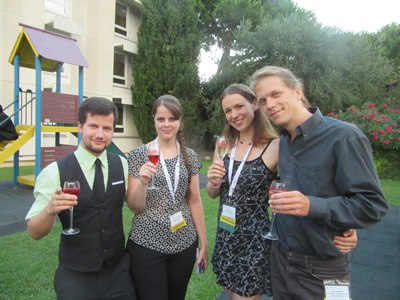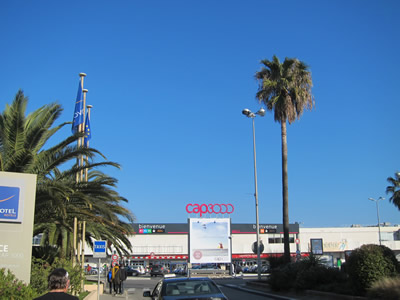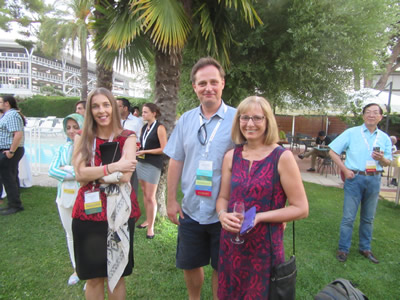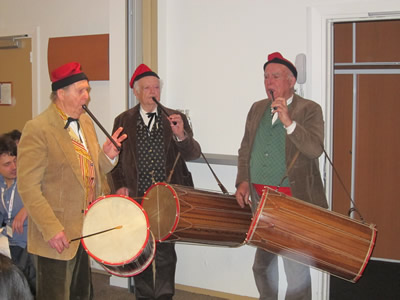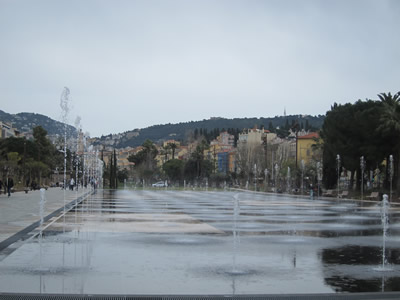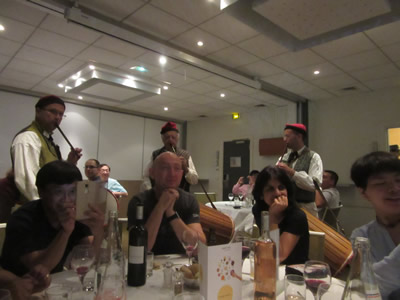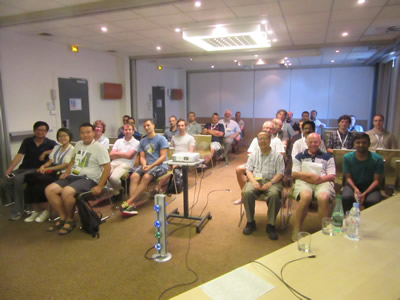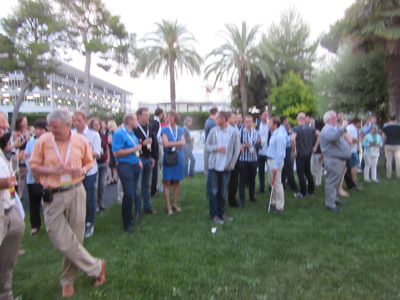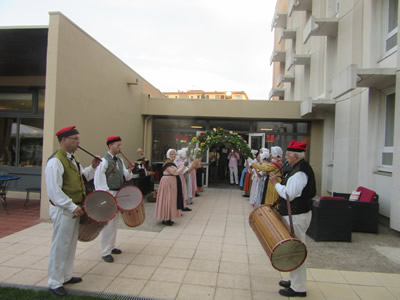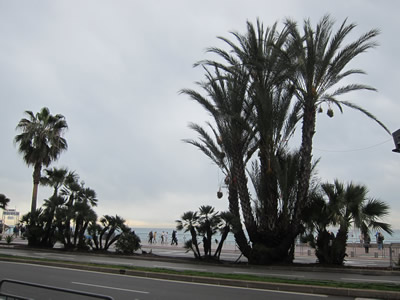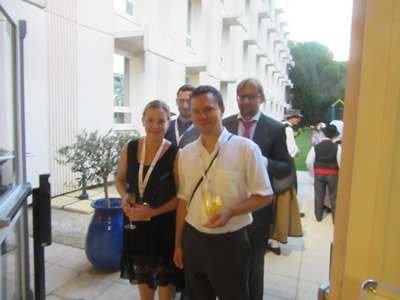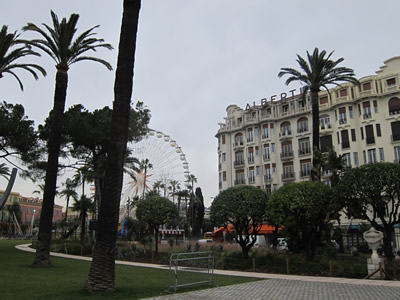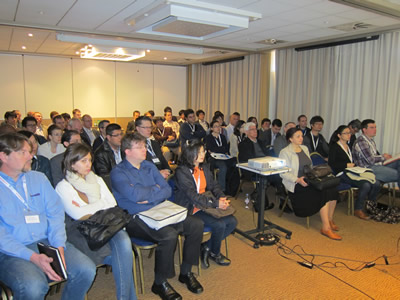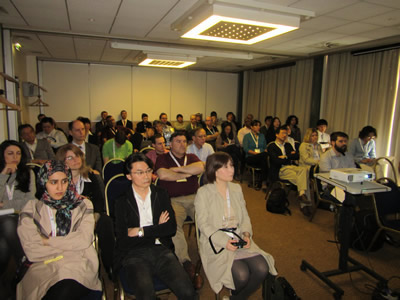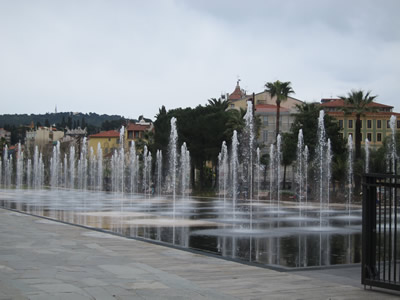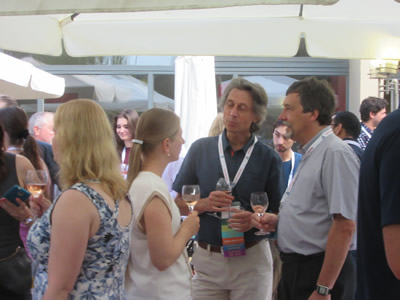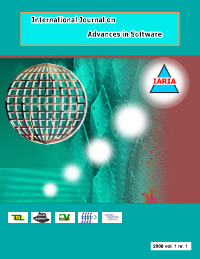SOFTENG 2025 - The Eleventh International Conference on Advances and Trends in Software Engineering
May 18, 2025 - May 22, 2025
SOFTENG 2025: Call for Papers
Onsite and Online Options: In order to accommodate various situations, we are offering the option for either physical presence or virtual participation (pdf slides or pre-recorded videos).
Software engineering exhibits challenging dimensions in the light of new applications, devices and services. Mobility, user-centric development, smart-devices, e-services, ambient environments, e-health and wearable/implantable devices pose specific challenges for specifying software requirements and developing reliable and safe software. Specific software interfaces, agile organization and software dependability require particular approaches for software security, maintainability, and sustainability.
SOFTENG 2025, The International Conference on Advances and Trends in Software Engineering, focuses on these challenging aspects for software development and deployment, across the whole life-cycle.
We solicit both academic, research, and industrial contributions. We welcome technical papers presenting research and practical results, position papers addressing the pros and cons of specific proposals, such as those being discussed in the standard fora or in industry consortia, survey papers addressing the key problems and solutions on any of the above topics short papers on work in progress, and panel proposals.
Industrial presentations are not subject to the format and content constraints of regular submissions. We expect short and long presentations that express industrial position and status.
Tutorials on specific related topics and panels on challenging areas are encouraged.
The topics suggested by the conference can be discussed in term of concepts, state of the art, research, standards, implementations, running experiments, applications, and industrial case studies. Authors are invited to submit complete unpublished papers, which are not under review in any other conference or journal in the following, but not limited to, topic areas.
All topics and submission formats are open to both research and industry contributions.
SOFTENG 2025 conference tracks:
Software requirements for smart environments and smart devices/systems
Design with software energy efficiency in mind; Software for portable devices; Synchronization constraints in smart cities systems; Combining multiple representation models; Sustainability design and apps for smart devices; Dealing with small-size screens; Software handling service recovery; Smart big data analytics as a service for smart systems; Design patterns for socially-aware computing on portable, wearable and implantable devices; Local/remote computation balance based on computation heat on wearable and implantable devices; Multithreading software for real-time scheduling smartly-equipped citizens; Software for fine grained access control with extended permissions and inheritable roles; Driving behavior prediction apps using multi-sensory data on a smartphone; Monitoring sentiment/citizens paths via open source via mobile apps; Cognitive apps for real-time mobile devices/systems; Apps for sensing human intention via self-adaptive systems; Test suites for real-time man-in-the-middle smart systems; Apps exploiting social context in personalized web-tasking applications; Testing large-scale software smart systems; Dedicated apps for smart cyber-physical systems; Prioritizing software requirements for smart environments; Software development for scaling mechanisms in smart mobile environments
Software requirements
Fundamentals on software engineering requirements;
Informal and formal representation of software requirements;
Languages, schemes, patterns, tools for gathering software requirements;
Tracking implementation for specific requirements;
Functional and non-functional requirements;
Requirements for ambient systems software;
Requirements for body networks software;
Requirements for smart devices and applications;
Requirements for wearable/implantable software;
Requirements for embedded software;
Requirements for adaptive software/systems;
Uncertainty specification in software requirements;
Requirements for software dedicated to Internet of Things;
Special requirements for data centers and cloud applications; Requirements for mobile software; Tools for requirements gathering; Requirements tracking tools; Tools for requirements conflict detection
Software designing and production
Methodologies and tools for software design and deployment;
Agile development; Model-driven software development and DSL design; Software design for interactive applications;
Software design for web-driven services;
Combining classical and Agile software development methods;
Empirical software engineering methods;
Specific methods for dedicated software;
Formal models and methods;
Parallel programming; Visual tools; Empirical distribution parameters;
Package management systems; Crowdsourcing software development;
Model checking specifications;
Software product lines; Tools and platforms for software development and deployment; Code generation environments; Specification and implementation of patterns/antipatterns
Software reuse
Software reuse approaches;
Pros and cons on software reuse;
Software reuse failures and lessons learned;
Automation and high level abstraction in software reuse;
Reusable components;
Third-party software and component reuse;
Software reuse metrics;
Reuse patterns;
Software reuse candidates (specifications, designs, tests cases, data, prototypes, plans, documentation, frameworks, and templates);
Online reuse aspects;
Weak and strong reuse;
Testing and validating reuse-based software;
Duplication and reuse;
Code clones;
Detecting and measuring similarity in code clones;
Open areas for research in software reuse
Software/hardware interfaces
General hardware/software modeling;
Hardware/software interface codesign;
Configurable and parametrized abstract interface architectures;
Multi-processor system on chip interfaces;
Interoperable hardware/software interfaces;
Interface-based design methodology;
Abstract models for concurrent hardware/software design;
Interfaces for embedded software;
Interfaces for ambient software;
Interfaces for software in mobile/smart devices;
Control flow;
Parallel processing interfaces;
Language translation modeling;
Hardware/software partitioning
Agile software organization
Agile software organization structure;
Agile teams and roles;
Generalizing agile specialists;
System integration in agile structures;
Agile analysis and design;
Scalable agile frameworks;
Performance management in agile organizations;
Metrics for agile software organization;
Business models and agile origination;
Strategy and guidance for agile software organization; Tools and guidance for agile-oriented business control
Software sustainability
Long lasting software;
Environmental impact and economic balance;
Modeling software product sustainability;
Factors affecting software sustainability;
Techniques for measuring sustainability;
Formal and informal methods for software sustainability;
Software sustainability and non-functional requirements;
Software sustainability maturity model;
Sustainable open source;
Sustainability and reliability, (self-)adaptability, maintainability, context-awareness, agility;
Software sustainability for green IT;
Energy consumption and e-waste from computers during software upgrades;
Governance models;
Software sustainability and sustainable human behaviors;
Operational risks, health and safety
Software testing and validation
Program analysis and software verification; Model-based testing; Testing system composition/orchestration; Data flow testing; Debugging and validation; Discovering vulnerabilities; Defects localization; Defects and failures in software libraries; Testing and run-time analysis based on verification technology; Testing evolving software; Testing embedded applications; Testing citizen-oriented software; Testing game software; Testing apps and on-line software; Testing web-based software; Testing mobile software; Testing software for smart devices; Testing software for wearable services/devices; Testing APIs; Testing software-intensive systems; Malpractice process models; Tools and methodologies for testing real-time software; Testing software performance; Testing for malware presence; Automatic testing methodologies; Software testing certification; Code validation; Metrics for software quality prediction
Maintenance and life-cycle management
Software rejuvenation;
Software termination;
Software duplication, redundancy;
Software versions and configuration control;
Software evolution;
Conformance and traceability;
Automated refactoring validation;
Verification techniques;
Software certification;
Managing software versions; Maintenance over cross-platforms; Maintaining evolutionary code; Validation of software configuration changes; Software patching metrics; Software evolution quality metrics; Removing unintentional implementations/features; Software visualization tools; Tasks-oriented maintenance; Updates dependency control; Maintenance for processing chains; Maintenance of clouds-based platforms; Maintenance of embedded software; Maintenance of automated tests; Maintenance of open-sources; Maintenance for legacy systems; Maintenance based on empirical evidence; Feature-to-code tracking and maintaining; Maintenance of functional and non-functional features; Maintaining user-priority features; Costs of maintenance efforts
Software reliability, robustness, safety
Metrics and measurements, estimation, prediction of quality/reliability;
Software reliability modeling;
Automatic repair;
Safety critical systems;
Software defect prediction models;
Software reliability testing;
Reliability, availability, and safety of software systems;
Risk-based testing;
Validation and verification;
Vulnerability analysis;
Software dependability;
Fault tolerance, survivability, and resilience of software systems;
Bug fixing;
Systems (hardware + software) reliability engineering;
Services reliability engineering;
Open source software reliability engineering;
Safety-critical systems;
Collision analysis to prevent hazards;
Safety, assurance, certification;
Supporting tools and automation;
Industry use cases and best practices;
Empirical studies and benchmarks
Software security
Security anomaly detection;
Detecting software sabotage;
Runtime dependability;
Threats for software libraries;
Data analytics for security verification;
Internet threats and countermeasures;
Open systems dependability;
Trusted component reuse;
Security and safety;
Trusted software;
Detecting code clones in malware;
Authentication schemes and software;
Trustworthiness in Cloud environments;
Communication integrity in critical embedded systems;
Latent security vulnerabilities
Challenges for dedicated software, platforms, and tools
Enterprise application integration; Platforms and tools for agile software; Platforms an tools for special software; Lessons learned on domain-oriented software; eHealth software;
Mobile applications;
Software for smart devices; Software for mobile devices; Assistive software;
Remote sensing software;
Touch-user interfaces;
Middleware software;
Social networks software;
Video-game software; Emerging interfaces;
User-intensive web applications;
Avionic software;
Real-time software;
Embedded software;
Simulation software;
Automotive software
Deadlines:
Submission | Feb 21, 2025 |
Notification | Mar 24, 2025 |
Registration | Apr 05, 2025 |
Camera ready | Apr 13, 2025 |
Deadlines differ for special tracks. Please consult the conference home page for special tracks Call for Papers (if any).
INSTRUCTION FOR THE AUTHORS
Authors of selected papers will be invited to submit extended versions to one of the IARIA Journals.
Publisher: XPS (Xpert Publishing Services)
Archived: ThinkMindTM Digital Library (free access)
Prints available at Curran Associates, Inc.
How to submit to appropriate indexes.
Only .pdf or .doc files will be accepted for paper submission. All received submissions will be acknowledged via an automated system.
Contribution types
- regular papers [in the proceedings, digital library]
- short papers (work in progress) [in the proceedings, digital library]
- ideas: two pages [in the proceedings, digital library]
- extended abstracts: two pages [in the proceedings, digital library]
- posters: two pages [in the proceedings, digital library]
- posters: slide only [slide-deck posted on www.iaria.org]
- presentations: slide only [slide-deck posted on www.iaria.org]
- demos: two pages [posted on www.iaria.org]
FORMATS
Only .pdf or .doc files will be accepted for paper submission. All received submissions will be acknowledged via an automated system.
Final author manuscripts will be 8.5" x 11", not exceeding 6 pages; max 4 extra pages allowed at additional cost.
Helpful information for paper formatting for MS Word can be found here.
There is a community provided LaTeX template: the CTAN package iaria (with full IARIA formatting rules, including IARIA citation style, but for providing citation style it is tightly bound to pdflatex+biblatex+biber). In addition, there is also iaria-lite (not bound to pdflatex+biblatex+biber, but compatible with any TeX stack; thus, it cannot provide the IARIA citation formattings, but only the titlepage and content-related IARIA formatting rules). Based on the iaria package, there is a minimal working example as Overleaf template. When you are using the LaTeX templates, please still adhere to the additional editorial rules.
Slides-based contributions can use the corporate/university format and style.
Your paper should also comply with the additional editorial rules.
Once you receive the notification of contribution acceptance, you will be provided by the publisher an online author kit with all the steps an author needs to follow to submit the final version. The author kits URL will be included in the letter of acceptance.
We would recommend that you should not use too many extra pages, even if you can afford the extra fees. No more than 2 contributions per event are recommended, as each contribution must be separately registered and paid for. At least one author of each accepted paper must register to ensure that the paper will be included in the conference proceedings and in the digital library, or posted on the www.iaria.org (for slide-based contributions).
CONTRIBUTION TYPE
Regular Papers (up to 6-10 page article -6 pages covered the by regular registration; max 4 extra pages allowed at additional cost- ) (oral presentation)
These contributions could be academic or industrial research, survey, white, implementation-oriented, architecture-oriented, white papers, etc. They will be included in the proceedings, posted in the free-access ThinkMind digital library and sent for indexing. Please submit the contributions following the instructions for the regular submissions using the "Submit a Paper" button and selecting the appropriate contribution type. 12-14 presentation slides are suggested.
Short papers (work in progress) (up to 4 pages long) (oral presentation)
Work-in-progress contributions are welcome. These contributions represent partial achievements of longer-term projects. They could be academic or industrial research, survey, white, implementation-oriented, architecture-oriented, white papers, etc. Please submit the contributions following the instructions for the regular submissions using the "Submit a Paper" button and selecting the contribution type as work in progress. Contributors must follow the conference deadlines, describing early research and novel skeleton ideas in the areas of the conference topics. The work will be published in the conference proceedings, posted in the free-access ThinkMind digital library and sent for indexing. For more details, see the Work in Progress explanation page. 12-14 presentation slides are suggested.
Ideas contributions (2 pages long) (oral presentation)
This category is dedicated to new ideas in their very early stage. Idea contributions are expression of yet to be developed approaches, with pros/cons, not yet consolidated. Ideas contributions are intended for a debate and audience feedback. Please submit the contributions following the instructions for the regular submissions using the "Submit a Paper" button and selecting the contribution type as Idea. Contributors must follow the conference deadlines, describing early research and novel skeleton ideas in the areas of the conference topics. The work will be published in the conference proceedings, posted in the free-access ThinkMind digital library and sent for indexing. For more details, see the Ideas explanation page. 12-14 presentation slides are suggested.
Extended abstracts (2 pages long) (oral presentation)
Extended abstracts summarize a long potential publication with noticeable results. It is intended for sharing yet to be written, or further on intended for a journal publication. Please submit the contributions following the instructions for the regular submissions using the "Submit a Paper" button and selecting the contribution type as Extended abstract. Contributors must follow the conference deadlines, describing early research and novel skeleton ideas in the areas of the conference topics. The work will be published in the conference proceedings, posted in the free-access ThinkMind digital library and sent for indexing. 12-14 presentation slides are suggested.
Posters (paper-based, two pages long) (oral presentation)
Posters are intended for ongoing research projects, concrete realizations, or industrial applications/projects presentations. The poster may be presented during sessions reserved for posters, or mixed with presentation of articles of similar topic. A two-page paper summarizes a presentation intended to be a POSTER. This allows an author to summarize a series of results and expose them via a big number of figures, graphics and tables. Please submit the contributions following the instructions for the regular submissions using the "Submit a Paper" button and selecting the contribution type as Poster Two Pages. Contributors must follow the conference deadlines, describing early research and novel skeleton ideas in the areas of the conference topics. The work will be published in the conference proceedings, posted in the free-access ThinkMind digital library and sent for indexing. 8-10 presentation slides are suggested. Also a big Poster is suitable, used for live discussions with the attendees, in addition to the oral presentation.
Posters (slide-based, only) (oral presentation)
Posters are intended for ongoing research projects, concrete realizations, or industrial applications/projects presentations. The poster may be presented during sessions reserved for posters, or mixed with presentation of articles of similar topic. The slides must have comprehensive comments. This type of contribution only requires a 8-10 slide-deck. Please submit the contributions following the instructions for the regular submissions using the "Submit a Paper" button and selecting the contribution type as Poster (slide-only). The slide-deck will be posted, post-event, on www.iaria.org.
8-10 presentation slides are suggested. Also a big Poster is suitable, used for live discussions with the attendees, additionally to the oral presentation.
Presentations (slide-based, only) (oral presentation)
These contributions represent technical marketing/industrial/business/positioning presentations. This type of contribution only requires a 12-14 slide-deck. Please submit the contributions following the submission instructions by using the "Submit a Paper" button and selecting the contribution type as Presentation (slide-only). The slide-deck will be posted, post-event, on www.iaria.org.
12-14 presentation slides are suggested.
Demos (two pages) [posted on www.iaria.org]
Demos represent special contributions where a tool, an implementation of an application, or a freshly implemented system is presented in its alfa/beta version. It might also be intended for thsoe new application to gather the attendee opinion. A two-page summary for a demo is intended to be. It would be scheduled in special time spots, to ensure a maximum attendance from the participants. Please submit the contributions following the submission instructions by using the "Submit a Paper" button and selecting the contribution type as Demos. The Demos paper will be posted, post-event, on www.iaria.org.
Tutorial proposals
Tutorials provide overviews of current high interest topics. Proposals should be for 2-3 hour long. Proposals must contain the title, the summary of the content, and the biography of the presenter(s). The tutorial slide decks will be posted on the IARIA site.
Please send your proposals to tutorial proposal
Panel proposals
The organizers encourage scientists and industry leaders to organize dedicated panels dealing with controversial and challenging topics and paradigms. Panel moderators are asked to identify their guests and manage that their appropriate talk supports timely reach our deadlines. Moderators must specifically submit an official proposal, indicating their background, panelist names, their affiliation, the topic of the panel, as well as short biographies. The panel slide deck will be posted on the IARIA site.
Please send your proposals to panel proposal







